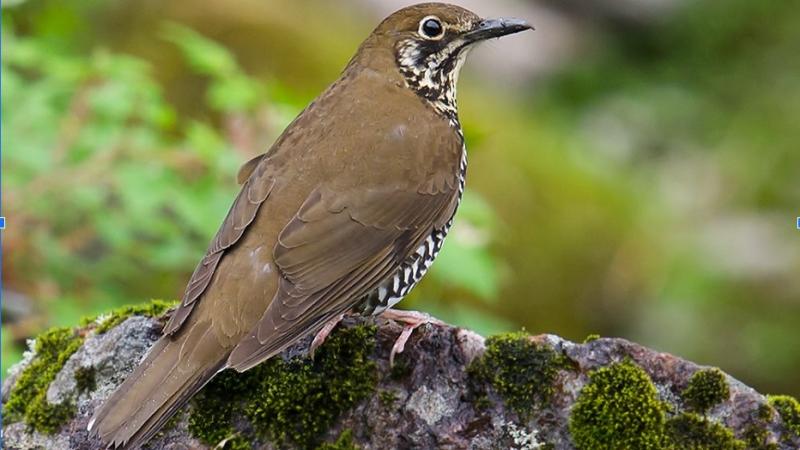
Himalayan forest thrush (Zoothera salimalii), a songbird discovered in 2016 and named after Salim Ali, the renowned Indian ornithologist. [Image Credits: Craig Brelsford, CC BY 4.0 via Wikimedia Commons]
What could be a better start to a day than waking up to an orchestra of bird songs? With an ensemble of pitches, the winged musicians sing their chorus without missing a note. Songbirds as the name indicates, are a group of birds that sing elaborate songs. Consisting over 5000 species of birds, including warblers, swallows, sparrows, robins, finches, and crows, songbirds produce two kinds of sounds — calls and songs. Calls are short, simple and made throughout the year to signal danger or flight. Songs, on the other hand, are long, complex sounds sung mostly during the breeding season, to find a mate or defend their territory. In most species, it is the males who are the singers.
Bird songs contain a series of syllables or a collection of notes. Every bird has its own version of a song, and the repertoire of the songs vary widely between species. Most songbirds species have a handful of songs they sing but some species, like the brown thrashers (Toxostoma rufum) can sing more than 2000 different songs!
In their tiny brains, a specific area called the high vocal centre, aids them in song learning. But, like us, they also need to be taught by a tutor to sing a ‘normal’ song. Some hormones, like testosterone, also play a role in producing a stable song. The young chicks start learning the songs within the first couple months where they try and produce ‘improper’ notes — much like a baby’s babbling. Over time, they start to imitate their tutor and perfect their signature songs. The females fall for the most elaborate and harmonious performance.
There are many similarities between how birds learn their songs, and we learn to speak. Akin to different types of bird songs, we learn a diverse set of languages and dialects with the help of similar neural pathways in the brain. Using birdsongs as a model to understand the development of human speech, scientists have now found the neurons responsible for speech-learning and the genes that are necessary to imitate sounds.
The most number of songbirds in the world is found in our backyard — the Himalayas. Scientists have recorded about 500 different species of these birds in the region by looking at their genetic diversity. Imagine what the dawn chorus would sound like amidst these pristine mountains!
Editor's note - This article was originally published on Deccan Herald.





